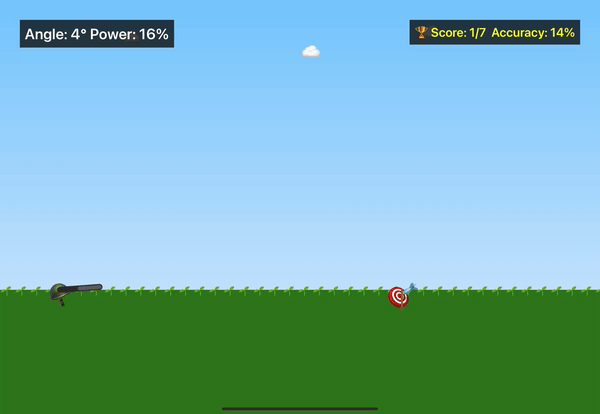# .308 Winchester, 168gr bullet at 2700 fps
./ballistics trajectory \
-v 2700 # Velocity (fps)
-b 0.475 # Ballistic coefficient
-m 168 # Mass (grains)
-d 0.308 # Diameter (inches)
--drag-model g7 # G7 drag model
--max-range 1000 # Maximum range (yards)
--wind-speed 10 # Wind speed (mph)
--wind-direction 90 # Wind from right
--temperature 59 # Temperature (°F)
--pressure 29.92 # Pressure (inHg)
--humidity 50 # Humidity (%)
--altitude 0 # Altitude (feet)
--full # Show all points
# Auto-zero at 200 yards with trajectory to 500 yards
./ballistics trajectory \
-v 2700 -b 0.475 -m 168 -d 0.308 \
--auto-zero 200 # Automatically zero at 200 yards
--max-range 500 \
--full
# Calculate zero for 200 yards
./ballistics zero \
-v 2700 -b 0.475 -m 168 -d 0.308 \
--target-distance 200
# With custom sight height
./ballistics zero \
-v 2700 -b 0.475 -m 168 -d 0.308 \
--target-distance 300 \
--sight-height 0.055 # 2.2 inches
# Output includes:
# - Zero angle in degrees
# - Adjustment in MOA
# - Adjustment in mrad
# - Maximum ordinate
# Statistical analysis with 1000 simulations
./ballistics monte-carlo \
-v 2700 # Base velocity (fps)
-b 0.475 # Base BC
-m 168 # Mass (grains)
-d 0.308 # Diameter (inches)
-n 1000 # Number of simulations
--velocity-std 10 # Velocity std dev (fps)
--angle-std 0.5 # Angle std dev (degrees)
--bc-std 0.01 # BC std dev
--wind-std 2 # Wind speed std dev (mph)
--target-distance 300 # Target distance for hit probability
# Load Development Comparison
# Load 1: Higher velocity, more variation
./ballistics monte-carlo \
-v 2750 -b 0.475 -m 168 -d 0.308 \
-n 1000 \
--velocity-std 15 \
--target-distance 600
# Load 2: Lower velocity, more consistent
./ballistics monte-carlo \
-v 2680 -b 0.475 -m 168 -d 0.308 \
-n 1000 \
--velocity-std 8 \
--target-distance 600
# Estimate BC from trajectory data
./ballistics estimate-bc \
-v 2700 -m 168 -d 0.308 \
--distance1 100 --drop1 0.0 # First point
--distance2 200 --drop2 0.023 # Second point
# Multiple data points for better accuracy
./ballistics estimate-bc \
-v 2700 -m 168 -d 0.308 \
--distance1 100 --drop1 0.0 \
--distance2 200 --drop2 0.023 \
--distance3 300 --drop3 0.091
use ballistics_engine::{
BallisticInputs, TrajectorySolver,
WindConditions, AtmosphericConditions
};
fn main() -> Result<(), Box> {
let inputs = BallisticInputs {
muzzle_velocity: 823.0, // m/s
ballistic_coefficient: 0.475,
mass: 0.0109, // kg
diameter: 0.00782, // meters
sight_height: 0.05, // meters
..Default::default()
};
let wind = WindConditions {
speed: 5.0, // m/s
direction: 1.5708, // 90° in radians
..Default::default()
};
let atmosphere = AtmosphericConditions {
temperature: 15.0, // Celsius
pressure: 1013.25, // hPa
humidity: 50.0, // %
..Default::default()
};
let solver = TrajectorySolver::new(
inputs, wind, atmosphere
);
let result = solver.solve()?;
println!("Max range: {:.2} m", result.max_range);
println!("Time of flight: {:.3} s", result.time_of_flight);
Ok(())
}
// Monte Carlo Simulation via FFI (C/Swift)
// Set up Monte Carlo parameters
FFIMonteCarloParams params = {
.num_simulations = 1000,
.velocity_std_dev = 10.0, // m/s variation
.angle_std_dev = 0.001, // radian variation
.bc_std_dev = 0.01, // BC variation
.wind_speed_std_dev = 2.0, // m/s wind variation
.target_distance = 600.0 // Target at 600m
};
// Run simulation
FFIMonteCarloResults* results = ballistics_monte_carlo(&inputs, NULL, ¶ms);
// Use statistical results
printf("Mean range: %.2f m (σ=%.2f)\n",
results->mean_range, results->std_dev_range);
printf("Hit probability at 600m: %.1f%%\n",
results->hit_probability * 100);
// Access individual shots
for (int i = 0; i < results->num_results; i++) {
printf("Shot %d: Range %.2f m, Impact velocity %.2f m/s\n",
i, results->ranges[i], results->impact_velocities[i]);
}
// Clean up
ballistics_free_monte_carlo_results(results);
# Complete Advanced Physics Example
./ballistics trajectory \
-v 2850 -b 0.690 -m 230 -d 0.338 \
--drag-model g7 \
--twist-rate 8.5 --twist-right \
--enable-magnus \
--enable-coriolis \
--enable-spin-drift \
--enable-wind-shear \
--enable-pitch-damping \
--enable-precession \
--sample-trajectory \
--latitude 38.5 \
--shooting-angle 45 \
--wind-speed 15 --wind-direction 270 \
--altitude 6000 \
--max-range 2000
# Transonic Stability Analysis
./ballistics trajectory -v 3000 -b 0.475 -m 168 -d 0.308 \
--enable-pitch-damping \
--max-range 2000
# Trajectory Sampling at regular intervals
./ballistics trajectory -v 2700 -b 0.475 -m 168 -d 0.308 \
--sample-trajectory \
--sample-interval 25 # Sample every 25 yards
--max-range 1000 -o json


